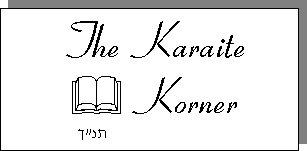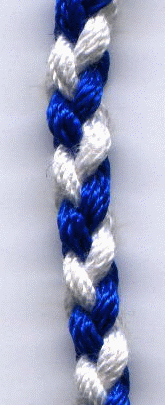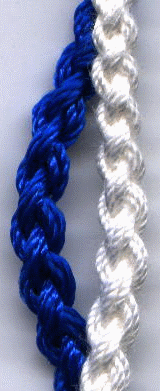

|
There are two problems with this Rabbinic assumption. The first is that the Karaites do not take the Tanach literally but rather require that every interpretation stand up to the same objective scrutiny regardless of its source. The second problem is that the Rabbinic myth interprets Nu 15:39 out of context. While taking something out of context is typical for Rabbinic interpretation, it is unacceptable to the Karaite commentator. A closer look at the passage in Nu 15:37-41 shows that the command of Tzitzit applies only to clothing, as the passage specifically states "And they will make for themselves Tzitzit on the corners of their garments" (Nu 15,38). The Biblical Hebrew word for garments (BeGeD) relates to something that is worn as clothing and therefore it is absurd to assume that the commandment can be fulfilled in any way other than by wearing a garment which has Tzitzit on it. Furthermore, Dt 22:12 specifically states that the Tzitzit are to be put "on the four corners of your clothing which you cover yourself with".  The motivation for this lie is quite interesting. Why would the Rabbis slander the Karaite Tzitzit practice? The answer is that the Torah commands that every four cornered garment have strings attached to it and among those strings must be a strand of blue (Tekhelet) (Nu 15:38). While the Karaites faithfully carry out this practice by placing a blue string on their Tzitzit, the Rabbanites ignore this commandment by only use white strings. The Rabbanite reason for abandoning the commandment to place a blue string on the Tzitzit is that the dye needed for the blue has been lost. However, Karaites point out that the Torah does not state which dye must be used to create the blue strings. Any dye that produces the color blue is sufficient.
The strings of the Tzitzit are to be tied into a chain-like knot and placed on the corners of four-cornered garments. This is commanded in Deuteronomy 22:12 which states "Chains [Gedilim, cf. 1 Kings 7:17] shall you make for yourself on the four corners of your clothing, with which you cover yourself with." The chain-like knots can be made in any number of ways and do not have to be made in the Rabbinic fashion (today's Karaites make the knots in a slightly different way than the Rabbanites). The important thing is that they have the appearance of links in a chain (Gedilim) and that they include at least one blue strand. The word Tzitzit itself literally means a "braid, plait" as in the verse "and took me by a plait (KJV: lock) of mine head". Thus the design of the Tzitzit must be like that of a braid/plait of hair which is the same design as the links in a chain. 
Biblical Passages which mention Tzitzit:
|